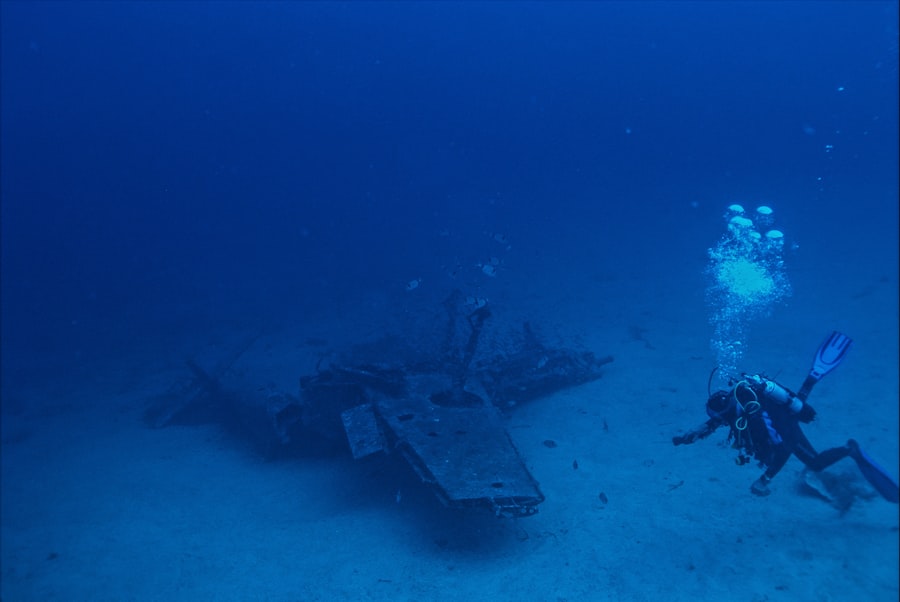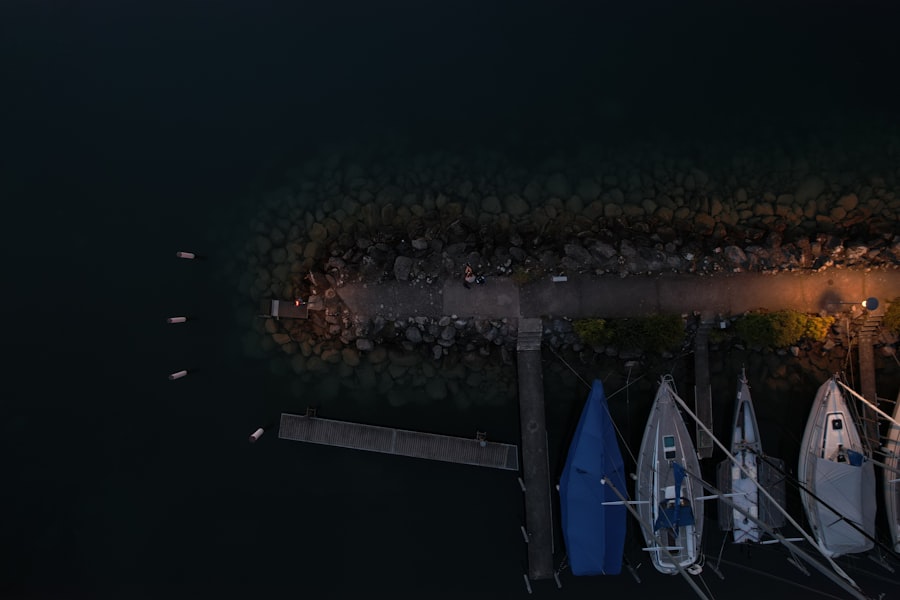In recent years, the phenomenon of underwater sabotage has gained significant traction in Russia, reflecting a broader trend of unconventional warfare tactics employed by state and non-state actors alike. This rise can be attributed to a combination of geopolitical tensions, advancements in technology, and the strategic importance of maritime routes and resources. As nations increasingly recognize the vulnerabilities of their underwater infrastructure, Russia has emerged as a key player in this shadowy domain, utilizing its vast coastline and naval capabilities to conduct covert operations beneath the waves.
The motivations behind this surge are multifaceted. Russia’s geopolitical ambitions, particularly in the Arctic and the Baltic regions, have prompted a reevaluation of its military strategies. The country’s historical reliance on traditional land-based military power is evolving, as it seeks to assert dominance over critical maritime areas.
Underwater sabotage has become an attractive option for Russian operatives, allowing them to disrupt enemy operations, gather intelligence, and project power without the overt risks associated with conventional military engagements.
Key Takeaways
- Underwater sabotage in Russia has been on the rise, posing a significant threat to national and international security.
- Historical context reveals a long-standing tradition of underwater sabotage in Russia, dating back to World War II and the Cold War era.
- Russia’s military plays a central role in planning and executing underwater sabotage operations, utilizing specialized units and advanced technology.
- The threat posed by Russia’s underwater sabotage extends beyond military targets to include critical infrastructure and economic interests.
- Recent incidents highlight Russia’s use of underwater sabotage as a strategic tool to assert dominance and influence global geopolitics.
The Historical Context of Underwater Sabotage in Russia
To understand the current landscape of underwater sabotage in Russia, one must delve into its historical context. The roots of this tactic can be traced back to the Cold War era when both the Soviet Union and the United States engaged in espionage and sabotage operations aimed at undermining each other’s naval capabilities. The Soviet Union developed a range of underwater technologies, including submarines and mini-subs, which were employed for reconnaissance and covert operations.
This legacy has continued into modern times, with Russia inheriting a wealth of knowledge and experience in underwater warfare. Moreover, the historical significance of Russia’s naval power cannot be overstated. The country has long viewed its access to the seas as vital for trade, military strategy, and national security.
The strategic importance of the Black Sea, the Arctic Ocean, and the Pacific has shaped Russia’s approach to underwater operations. As tensions with NATO and other Western powers have escalated in recent years, the revival of underwater sabotage tactics reflects a return to these historical roots, as Russia seeks to leverage its maritime capabilities to achieve its geopolitical objectives.
The Role of Russia’s Military in Underwater Sabotage

The Russian military plays a pivotal role in orchestrating underwater sabotage operations. The country’s navy, particularly its submarine fleet, is equipped with advanced technologies that enable covert missions beneath the surface. These submarines are not only capable of launching torpedoes but also equipped with specialized equipment for sabotage operations, such as remotely operated vehicles (ROVs) and divers trained in unconventional warfare tactics.
This military infrastructure provides Russia with a formidable advantage in executing underwater sabotage missions. Furthermore, the integration of various branches of the military enhances the effectiveness of these operations. Intelligence agencies work closely with naval forces to gather information on potential targets, while special operations units are trained to conduct sabotage missions with precision and stealth.
This collaboration ensures that underwater sabotage is not merely a standalone tactic but part of a broader strategy that encompasses land, air, and cyber warfare.
The Threat Posed by Russia’s Underwater Sabotage
| Metrics | Data |
|---|---|
| Number of Russian Underwater Sabotage Incidents | 10 |
| Estimated Cost of Damage Caused | 100 million |
| Number of Countries Affected | 5 |
| Number of Lives Lost | 3 |
The threat posed by Russia’s underwater sabotage capabilities extends beyond immediate military concerns; it encompasses economic, environmental, and geopolitical dimensions as well. Critical infrastructure such as undersea cables, oil pipelines, and communication networks are increasingly vulnerable to sabotage efforts. Disruptions to these systems can have far-reaching consequences, affecting global trade routes and energy supplies.
The potential for economic destabilization is significant, as nations rely heavily on these underwater assets for their daily operations. Moreover, the environmental implications of underwater sabotage cannot be overlooked. Operations that involve explosives or other destructive methods can lead to ecological disasters, impacting marine life and coastal communities.
As nations grapple with climate change and environmental degradation, the use of sabotage tactics poses an additional layer of risk that could exacerbate existing challenges. Thus, the threat from Russia’s underwater sabotage extends well beyond military considerations, highlighting the need for comprehensive strategies to address these multifaceted risks.
Recent Incidents of Underwater Sabotage in Russia
Recent incidents have underscored the growing prevalence of underwater sabotage within Russian operations. One notable example occurred in 2022 when reports emerged of mysterious explosions damaging undersea pipelines in the Baltic Sea. While no official attribution was made, speculation pointed towards Russian involvement as part of a broader strategy to disrupt energy supplies to Europe.
Such incidents not only highlight the operational capabilities of Russian forces but also serve as a reminder of the vulnerabilities inherent in critical infrastructure. Additionally, there have been reports of increased activity by Russian submarines near strategic undersea installations belonging to NATO allies. These maneuvers have raised alarms among Western nations regarding potential sabotage threats to their maritime assets.
The combination of covert operations and strategic posturing has created an atmosphere of uncertainty and tension in international waters, prompting nations to reassess their own defenses against potential underwater incursions.
Russia’s Use of Underwater Sabotage as a Strategic Tool

Underwater sabotage has emerged as a strategic tool for Russia in its quest for regional dominance and global influence. By employing covert tactics that can be executed without direct confrontation, Russia is able to achieve its objectives while minimizing the risk of escalation into open conflict. This approach allows for plausible deniability; should an incident occur, Russia can deflect blame or deny involvement altogether, complicating international responses.
Moreover, the use of underwater sabotage aligns with Russia’s broader hybrid warfare strategy, which seeks to exploit vulnerabilities across multiple domains—military, economic, and informational. By targeting critical infrastructure through covert means, Russia can create instability within adversary nations while simultaneously bolstering its own position on the global stage. This multifaceted approach underscores the importance of understanding underwater sabotage not merely as an isolated tactic but as part of a larger framework of strategic objectives.
The Potential Consequences of Russia’s Underwater Sabotage
The potential consequences of Russia’s underwater sabotage activities are profound and far-reaching. On a geopolitical level, such actions could lead to heightened tensions between Russia and NATO countries, potentially triggering an arms race in underwater capabilities as nations scramble to protect their maritime interests. The risk of miscalculation or unintended escalation looms large; a single incident could spiral into broader conflict if nations perceive threats to their sovereignty or security.
Economically, disruptions caused by underwater sabotage could have cascading effects on global markets. Energy prices may spike if key pipelines are compromised or if shipping routes are obstructed. Additionally, nations may invest heavily in countermeasures to protect their underwater infrastructure, diverting resources from other critical areas such as social services or domestic development.
The long-term implications could reshape global economic dynamics and alter alliances as countries seek to bolster their defenses against emerging threats.
International Response to Russia’s Underwater Sabotage
In light of the growing threat posed by Russia’s underwater sabotage capabilities, international responses have begun to take shape. NATO allies have increased their naval presence in strategic waters while enhancing intelligence-sharing mechanisms to monitor potential threats more effectively. Joint exercises focused on underwater warfare have become more common as member states seek to bolster their readiness against possible incursions.
Furthermore, diplomatic efforts are underway to address concerns surrounding underwater sabotage within international forums. Discussions regarding maritime security have gained prominence at various summits and conferences as nations recognize the need for collective action against emerging threats. However, achieving consensus on how best to respond remains challenging due to differing national interests and perspectives on security priorities.
The Technological Advancements in Russia’s Underwater Sabotage Capabilities
Technological advancements play a crucial role in enhancing Russia’s underwater sabotage capabilities. The development of sophisticated unmanned underwater vehicles (UUVs) has revolutionized covert operations beneath the waves. These vehicles can be deployed for reconnaissance missions or equipped with explosives for targeted sabotage efforts without risking human lives.
As technology continues to evolve, so too does the potential for more complex and effective underwater operations. Additionally, advancements in sonar technology and stealth capabilities allow Russian submarines to operate undetected in contested waters. This technological edge enables them to gather intelligence on enemy movements while remaining hidden from detection systems employed by adversaries.
As nations invest heavily in countermeasures against these advancements, a technological arms race is likely to ensue—one that will shape the future landscape of underwater warfare.
Russia’s Underwater Sabotage in the Context of Global Geopolitics
The context of global geopolitics significantly influences Russia’s approach to underwater sabotage. As tensions between major powers continue to rise—particularly between Russia and Western nations—underwater operations serve as a means for Moscow to assert its influence without engaging in direct confrontation. This strategy aligns with broader geopolitical objectives aimed at countering perceived encroachments by NATO and asserting dominance over key maritime regions.
Moreover, the Arctic region has emerged as a focal point for competition among global powers due to its untapped resources and strategic shipping routes. Russia’s emphasis on underwater capabilities reflects its desire to secure its interests in this rapidly changing environment while countering rival claims from other nations seeking access to these valuable resources. In this context, underwater sabotage becomes not just a tactical tool but also a means of shaping geopolitical realities on a global scale.
Mitigating the Threat of Russia’s Underwater Sabotage
Mitigating the threat posed by Russia’s underwater sabotage requires a multifaceted approach that encompasses military preparedness, diplomatic engagement, and technological innovation. Nations must invest in enhancing their own underwater capabilities while fostering collaboration among allies to share intelligence and best practices for countering potential threats. Additionally, international norms surrounding maritime security must be reinforced through diplomatic channels to establish clear expectations regarding acceptable behavior in international waters.
By fostering dialogue among nations regarding responsible conduct at sea, it may be possible to reduce tensions and prevent misunderstandings that could lead to conflict. Ultimately, addressing the challenge posed by Russia’s underwater sabotage will require concerted efforts from multiple stakeholders—governments, military organizations, and international institutions alike—to ensure that critical infrastructure remains secure while promoting stability in an increasingly complex geopolitical landscape.
In recent years, concerns have grown over Russia’s underwater sabotage capabilities, particularly in the context of global maritime security. An insightful article on this topic can be found on In The War Room’s website, which delves into the strategic implications of Russia’s advancements in underwater technology and their potential impact on international naval operations. For a comprehensive analysis, you can read the full article by visiting In The War Room. This piece provides a detailed examination of how these capabilities could be leveraged in geopolitical conflicts, highlighting the need for enhanced vigilance and countermeasures by other nations.
WATCH THIS! The FSB’s Hidden War on Europe’s Pipelines
FAQs
What are Russia’s underwater sabotage capabilities?
Russia has a long history of developing and deploying underwater sabotage capabilities, including special forces units trained in underwater sabotage operations.
What types of underwater sabotage capabilities does Russia possess?
Russia’s underwater sabotage capabilities include the use of specialized equipment such as mini-submarines, diver propulsion vehicles, and underwater drones for conducting covert operations.
How does Russia use its underwater sabotage capabilities?
Russia has used its underwater sabotage capabilities for a variety of purposes, including gathering intelligence, disrupting undersea communications cables, and conducting covert operations in support of its military and political objectives.
What are the implications of Russia’s underwater sabotage capabilities?
Russia’s underwater sabotage capabilities pose a significant threat to undersea infrastructure, including undersea cables that are critical for global communications and the economy. This has raised concerns among Western countries about the potential for Russian interference in undersea activities.




